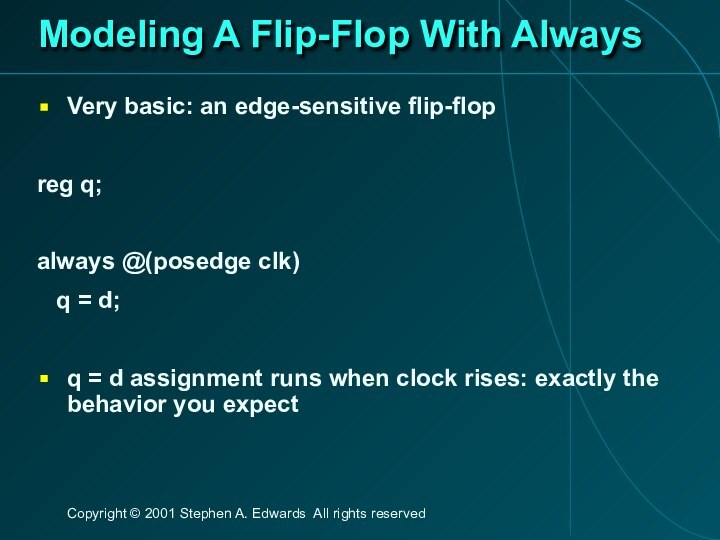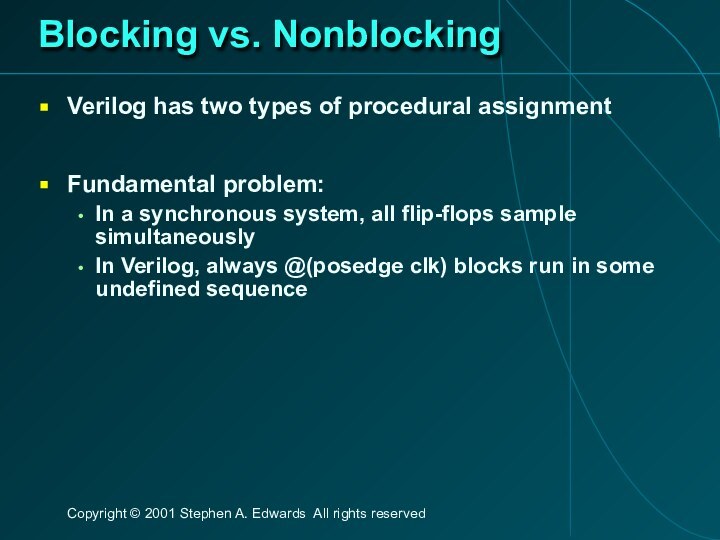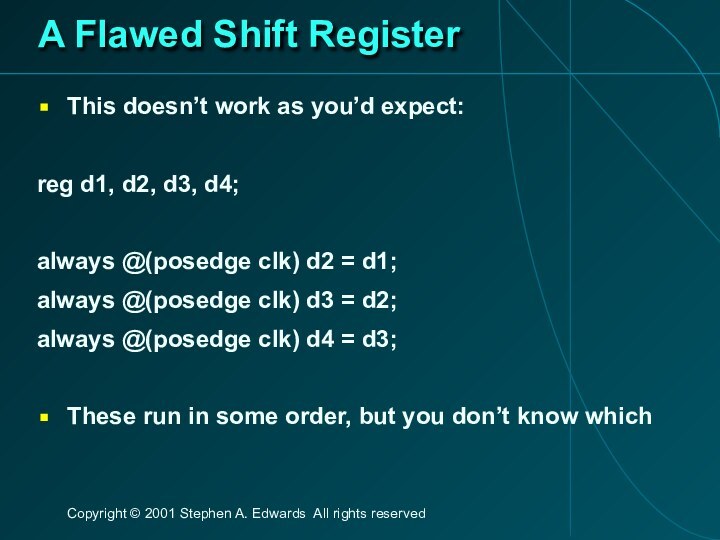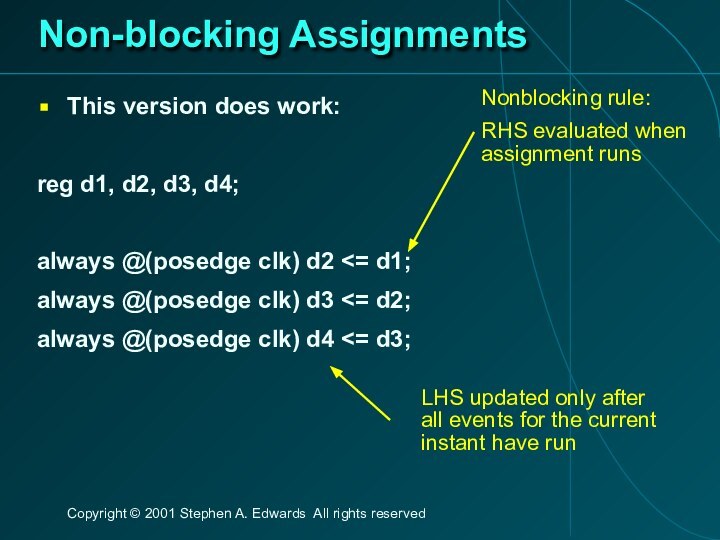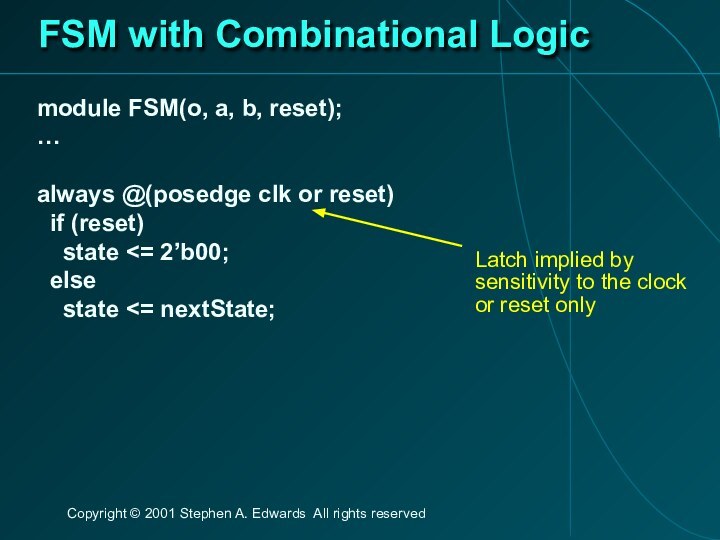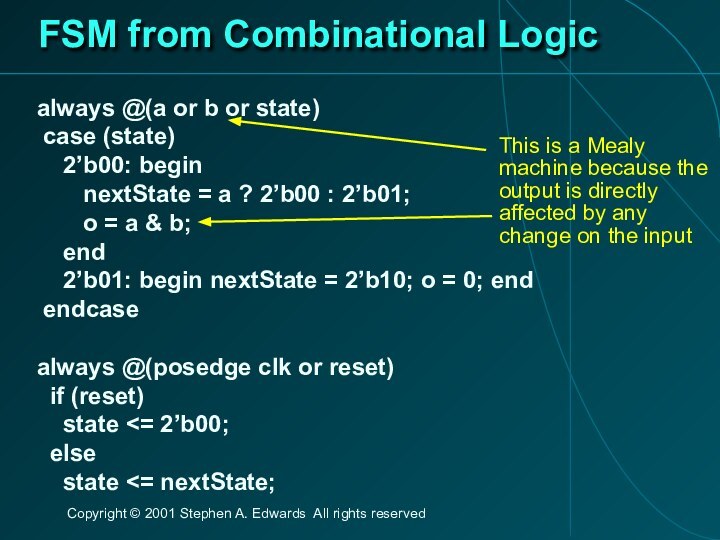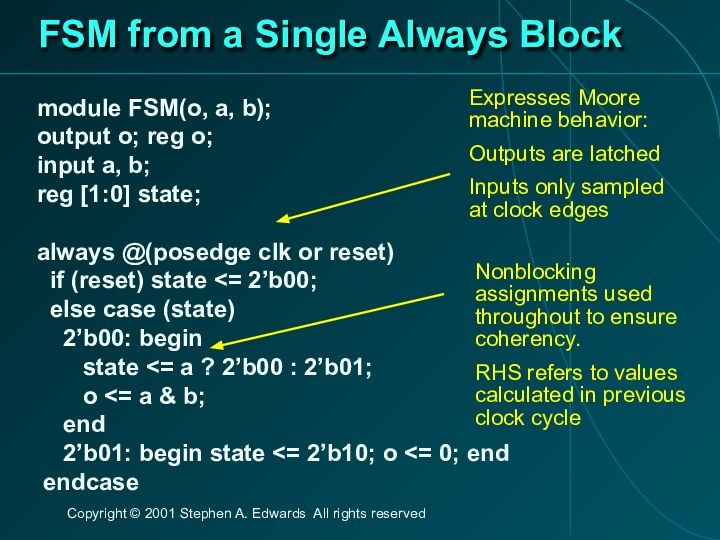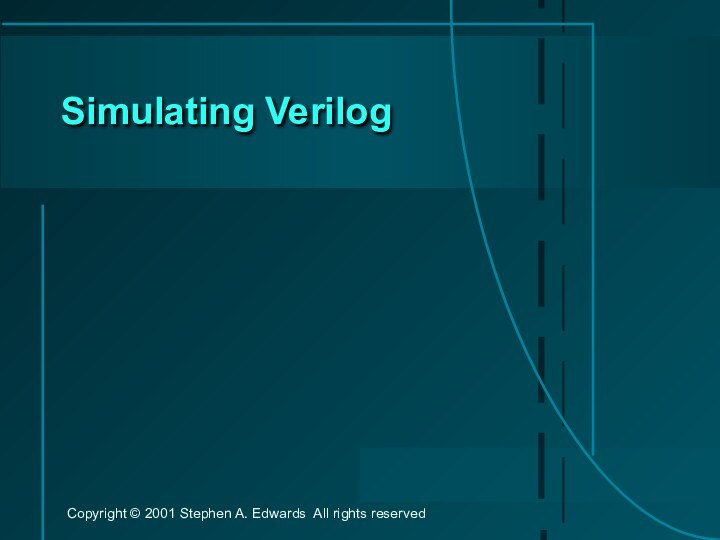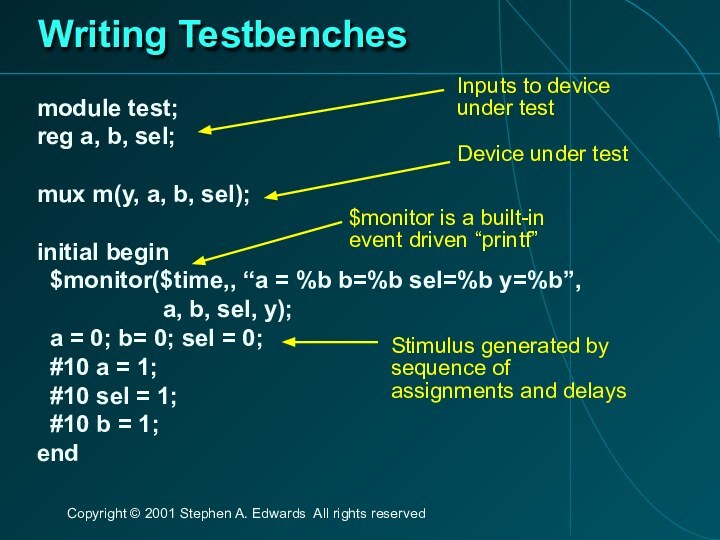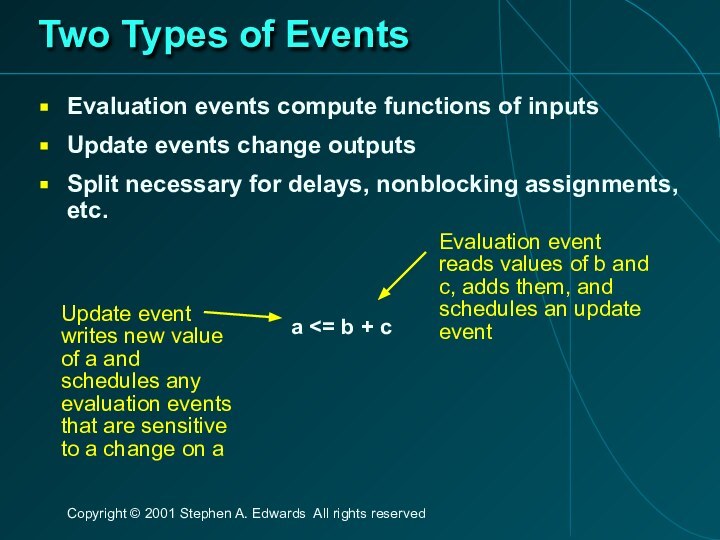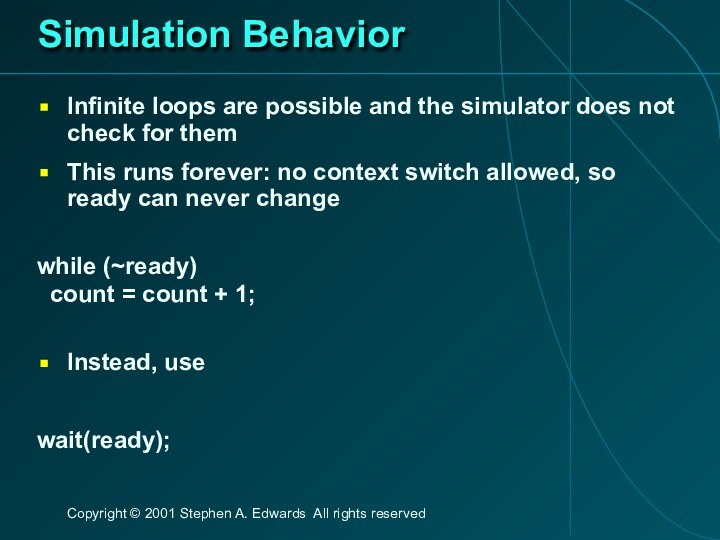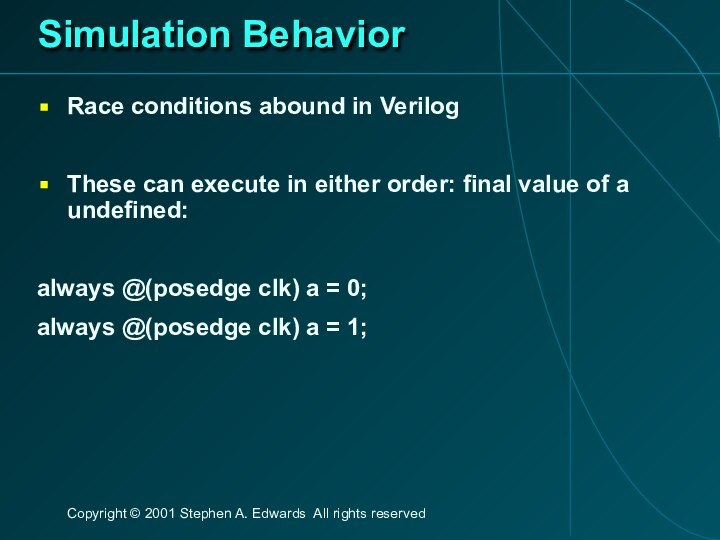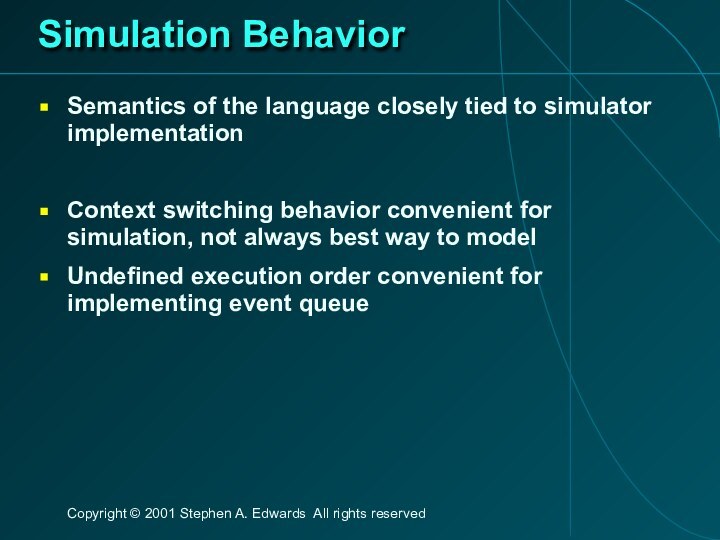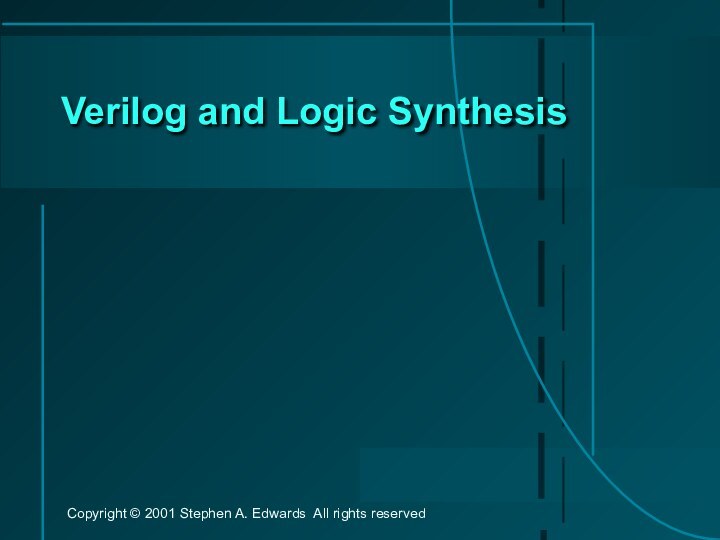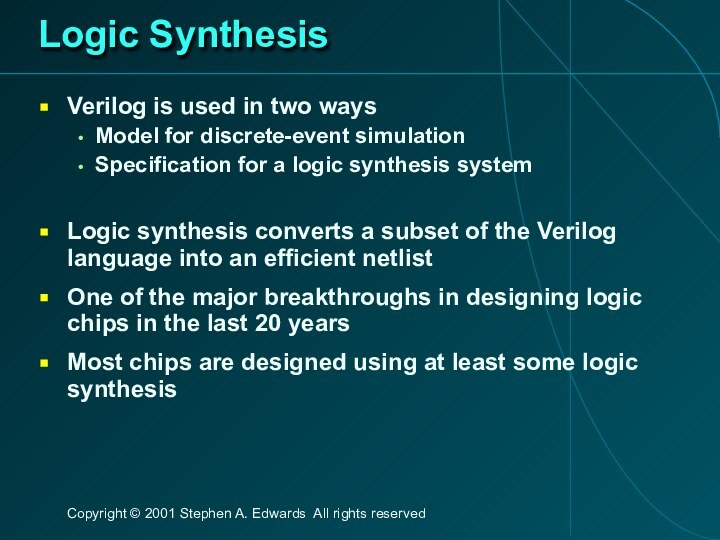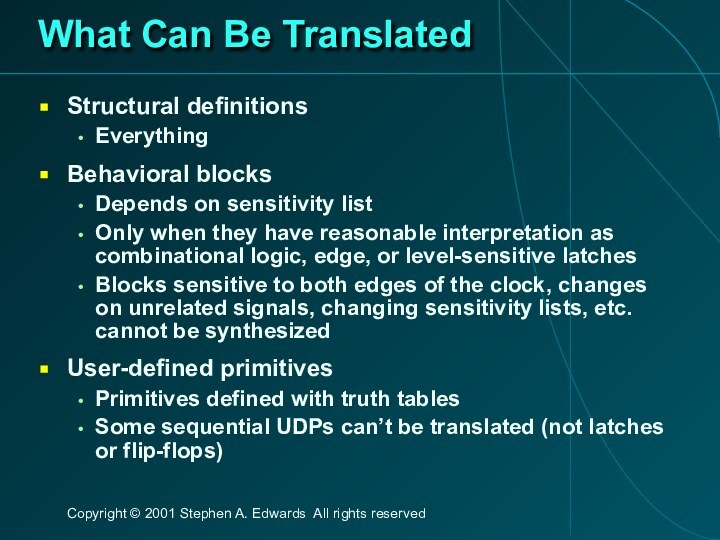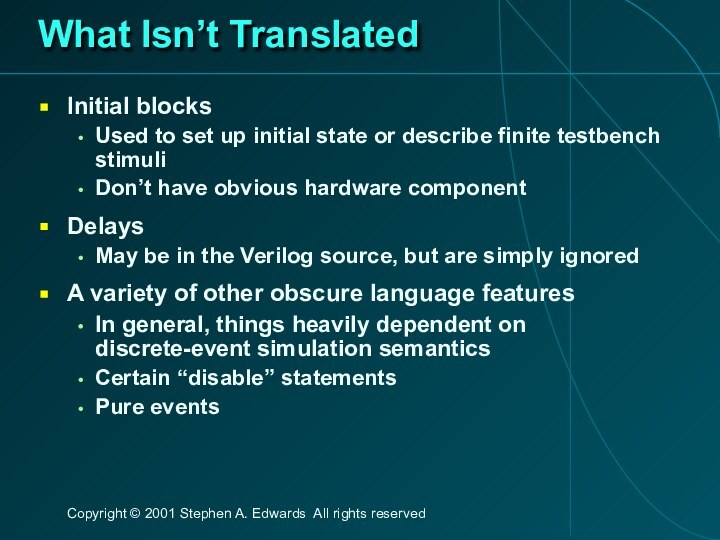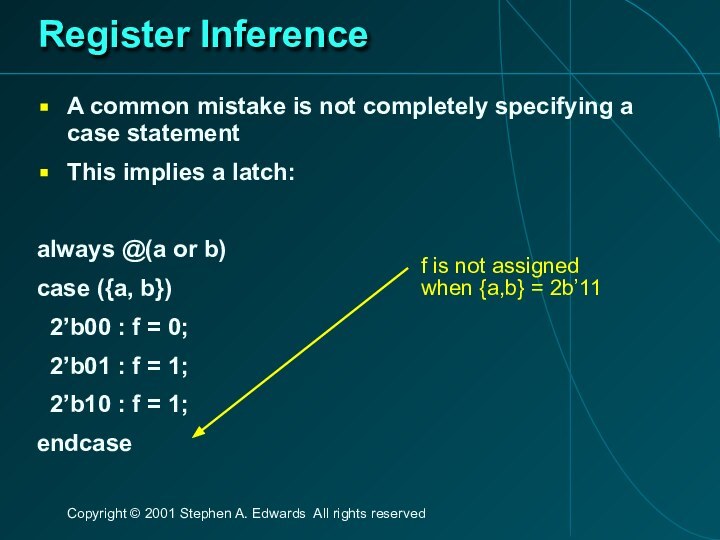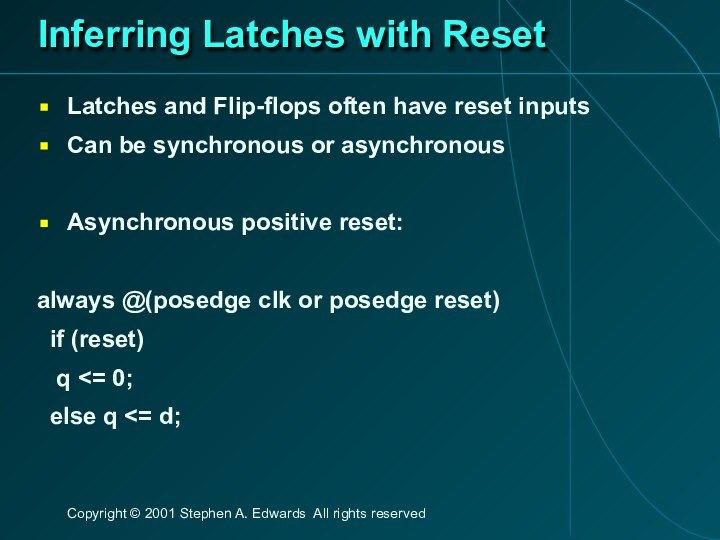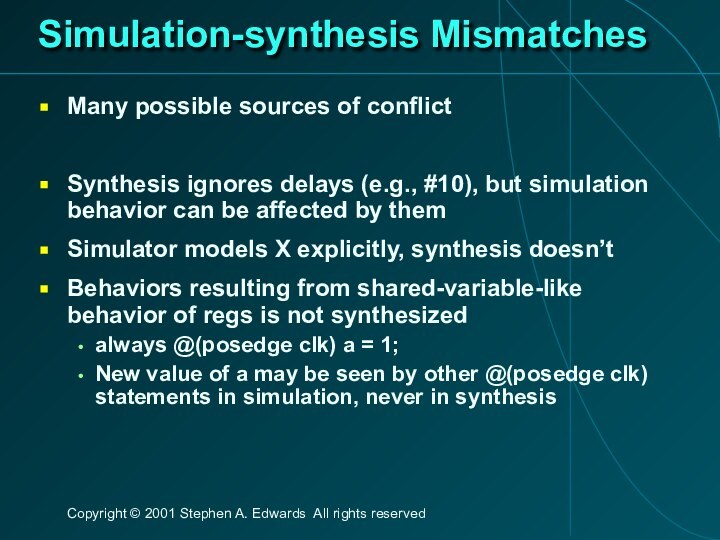Слайд 2
The Verilog Language
Originally a modeling language for a
very efficient event-driven digital logic simulator
Later pushed into use
as a specification language for logic synthesis
Now, one of the two most commonly-used languages in digital hardware design (VHDL is the other)
Virtually every chip (FPGA, ASIC, etc.) is designed in part using one of these two languages
Combines structural and behavioral modeling styles
Слайд 3
Structural Modeling
When Verilog was first developed (1984) most
logic simulators operated on netlists
Netlist: list of gates and
how they’re connected
A natural representation of a digital logic circuit
Not the most convenient way to express test benches
Слайд 4
Behavioral Modeling
A much easier way to write testbenches
Also
good for more abstract models of circuits
Easier to write
Simulates
faster
More flexible
Provides sequencing
Verilog succeeded in part because it allowed both the model and the testbench to be described together
Слайд 5
How Verilog Is Used
Virtually every ASIC is designed
using either Verilog or VHDL (a similar language)
Behavioral modeling
with some structural elements
“Synthesis subset”
Can be translated using Synopsys’ Design Compiler or others into a netlist
Design written in Verilog
Simulated to death to check functionality
Synthesized (netlist generated)
Static timing analysis to check timing
Слайд 6
Two Main Components of Verilog
Concurrent, event-triggered processes (behavioral)
Initial
and Always blocks
Imperative code that can perform standard data
manipulation tasks (assignment, if-then, case)
Processes run until they delay for a period of time or wait for a triggering event
Structure (Plumbing)
Verilog program build from modules with I/O interfaces
Modules may contain instances of other modules
Modules contain local signals, etc.
Module configuration is static and all run concurrently
Слайд 7
Two Main Data Types
Nets represent connections between things
Do
not hold their value
Take their value from a driver
such as a gate or other module
Cannot be assigned in an initial or always block
Regs represent data storage
Behave exactly like memory in a computer
Hold their value until explicitly assigned in an initial or always block
Never connected to something
Can be used to model latches, flip-flops, etc., but do not correspond exactly
Shared variables with all their attendant problems
Слайд 8
Discrete-event Simulation
Basic idea: only do work when something
changes
Centered around an event queue
Contains events labeled with the
simulated time at which they are to be executed
Basic simulation paradigm
Execute every event for the current simulated time
Doing this changes system state and may schedule events in the future
When there are no events left at the current time instance, advance simulated time soonest event in the queue
Слайд 9
Four-valued Data
Verilog’s nets and registers hold four-valued data
0,
1
Obvious
Z
Output of an undriven tri-state driver
Models case where nothing
is setting a wire’s value
X
Models when the simulator can’t decide the value
Initial state of registers
When a wire is being driven to 0 and 1 simultaneously
Output of a gate with Z inputs
Слайд 10
Four-valued Logic
Logical operators work on three-valued logic
0 1 X Z
0 0 0 0 0
1 0 1 X X
X 0 X X X
Z 0 X X X
Output 0
if one input is 0
Output X if both inputs
are gibberish
Слайд 12
Nets and Registers
Wires and registers can be bits,
vectors, and arrays
wire a; // Simple wire
tri [15:0] dbus; // 16-bit
tristate bus
tri #(5,4,8) b; // Wire with delay
reg [-1:4] vec; // Six-bit register
trireg (small) q; // Wire stores a small charge
integer imem[0:1023]; // Array of 1024 integers
reg [31:0] dcache[0:63]; // A 32-bit memory
Слайд 13
Modules and Instances
Basic structure of a Verilog module:
module
mymod(output1, output2, … input1, input2);
output output1;
output [3:0] output2;
input input1;
input
[2:0] input2;
…
endmodule
Verilog convention lists outputs first
Слайд 14
Instantiating a Module
Instances of
module mymod(y, a, b);
look like
mymod
mm1(y1, a1, b1); // Connect-by-position
mymod (y2, a1, b1),
(y3,
a2, b2); // Instance names omitted
mymod mm2(.a(a2), .b(b2), .y(c2)); // Connect-by-name
Слайд 15
Gate-level Primitives
Verilog provides the following:
and nand logical AND/NAND
or nor logical OR/NOR
xor xnor logical XOR/XNOR
buf not buffer/inverter
bufif0 notif0 Tristate
with low enable
bifif1 notif1 Tristate with high enable
Слайд 16
Delays on Primitive Instances
Instances of primitives may include
delays
buf b1(a, b); // Zero delay
buf #3 b2(c, d); // Delay of 3
buf
#(4,5) b3(e, f); // Rise=4, fall=5
buf #(3:4:5) b4(g, h); // Min-typ-max
Слайд 17
User-Defined Primitives
Way to define gates and sequential elements
using a truth table
Often simulate faster than using expressions,
collections of primitive gates, etc.
Gives more control over behavior with X inputs
Most often used for specifying custom gate libraries
Слайд 18
A Carry Primitive
primitive carry(out, a, b, c);
output out;
input
a, b, c;
table
00? : 0;
0?0 : 0;
?00 : 0;
11? : 1;
1?1 : 1;
?11 : 1;
endtable
endprimitive
Always have exactly one output
Truth table may include don’t-care (?) entries
Слайд 19
A Sequential Primitive
Primitive dff( q, clk, data);
output q;
reg q;
input clk, data;
table
// clk data q new-q
(01) 0 : ? : 0; // Latch a 0
(01) 1 : ? : 1; // Latch a 1
(0x) 1 : 1 : 1; // Hold when d and q both 1
(0x) 0 : 0 : 0; // Hold when d and q both 0
(?0) ? : ? : -; // Hold when clk falls
? (??) : ? : -; // Hold when clk stable
endtable
endprimitive
Слайд 20
Continuous Assignment
Another way to describe combinational function
Convenient for
logical or datapath specifications
wire [8:0] sum;
wire [7:0] a, b;
wire
carryin;
assign sum = a + b + carryin;
Define bus widths
Continuous assignment: permanently sets the value of sum to be a+b+carryin
Recomputed when a, b, or carryin changes
Слайд 22
Initial and Always Blocks
Basic components for behavioral modeling
initial
begin
… imperative statements …
end
Runs when simulation
starts
Terminates when control reaches the end
Good for providing stimulus
always
begin
… imperative statements …
end
Runs when simulation starts
Restarts when control reaches the end
Good for modeling/specifying hardware
Слайд 23
Initial and Always
Run until they encounter a delay
initial
begin
#10 a = 1; b = 0;
#10
a = 0; b = 1;
end
or a wait for an event
always @(posedge clk) q = d;
always begin wait(i); a = 0; wait(~i); a = 1; end
Слайд 24
Procedural Assignment
Inside an initial or always block:
sum =
a + b + cin;
Just like in C: RHS
evaluated and assigned to LHS before next statement executes
RHS may contain wires and regs
Two possible sources for data
LHS must be a reg
Primitives or cont. assignment may set wire values
Слайд 25
Imperative Statements
if (select == 1) y = a;
else y =
b;
case (op)
2’b00: y = a + b;
2’b01:
y = a – b;
2’b10: y = a ^ b;
default: y = ‘hxxxx;
endcase
Слайд 26
For Loops
A increasing sequence of values on an
output
reg [3:0] i, output;
for ( i = 0 ;
i <= 15 ; i = i + 1 ) begin
output = i;
#10;
end
Слайд 27
While Loops
A increasing sequence of values on an
output
reg [3:0] i, output;
i = 0;
while (I
begin
output = i;
#10 i = i + 1;
end
Слайд 28
Modeling A Flip-Flop With Always
Very basic: an edge-sensitive
flip-flop
reg q;
always @(posedge clk)
q = d;
q =
d assignment runs when clock rises: exactly the behavior you expect
Слайд 29
Blocking vs. Nonblocking
Verilog has two types of procedural
assignment
Fundamental problem:
In a synchronous system, all flip-flops sample simultaneously
In
Verilog, always @(posedge clk) blocks run in some undefined sequence
Слайд 30
A Flawed Shift Register
This doesn’t work as you’d
expect:
reg d1, d2, d3, d4;
always @(posedge clk) d2 =
d1;
always @(posedge clk) d3 = d2;
always @(posedge clk) d4 = d3;
These run in some order, but you don’t know which
Слайд 31
Non-blocking Assignments
This version does work:
reg d1, d2, d3,
d4;
always @(posedge clk) d2
<= d2;
always @(posedge clk) d4 <= d3;
Nonblocking rule:
RHS evaluated when assignment runs
LHS updated only after all events for the current instant have run
Слайд 32
Nonblocking Can Behave Oddly
A sequence of nonblocking assignments
don’t communicate
a = 1;
b = a;
c = b;
Blocking assignment:
a
= b = c = 1
a <= 1;
b <= a;
c <= b;
Nonblocking assignment:
a = 1
b = old value of a
c = old value of b
Слайд 33
Nonblocking Looks Like Latches
RHS of nonblocking taken from
latches
RHS of blocking taken from wires
a = 1;
b =
a;
c = b;
a <= 1;
b <= a;
c <= b;
1
a
b
c
“
”
a
b
c
1
“
”
Слайд 35
Modeling FSMs Behaviorally
There are many ways to do
it:
Define the next-state logic combinationally and define the state-holding
latches explicitly
Define the behavior in a single always @(posedge clk) block
Variations on these themes
Слайд 36
FSM with Combinational Logic
module FSM(o, a, b, reset);
output
o;
reg o;
input a, b, reset;
reg [1:0] state, nextState;
always @(a
or b or state)
case (state)
2’b00: begin
nextState = a ? 2’b00 : 2’b01;
o = a & b;
end
2’b01: begin nextState = 2’b10; o = 0; end
endcase
Combinational block must be sensitive to any change on any of its inputs
(Implies state-holding elements otherwise)
Output o is declared a reg because it is assigned procedurally, not because it holds state
Слайд 37
FSM with Combinational Logic
module FSM(o, a, b, reset);
…
always
@(posedge clk or reset)
if (reset)
state
2’b00;
else
state <= nextState;
Latch implied by sensitivity to the clock or reset only
Слайд 38
FSM from Combinational Logic
always @(a or b or
state)
case (state)
2’b00: begin
nextState = a ? 2’b00 : 2’b01;
o = a & b;
end
2’b01: begin nextState = 2’b10; o = 0; end
endcase
always @(posedge clk or reset)
if (reset)
state <= 2’b00;
else
state <= nextState;
This is a Mealy machine because the output is directly affected by any change on the input
Слайд 39
FSM from a Single Always Block
module FSM(o, a,
b);
output o; reg o;
input a, b;
reg [1:0] state;
always @(posedge
clk or reset)
if (reset) state <= 2’b00;
else case (state)
2’b00: begin
state <= a ? 2’b00 : 2’b01;
o <= a & b;
end
2’b01: begin state <= 2’b10; o <= 0; end
endcase
Expresses Moore machine behavior:
Outputs are latched
Inputs only sampled at clock edges
Nonblocking assignments used throughout to ensure coherency.
RHS refers to values calculated in previous clock cycle
Слайд 41
How Are Simulators Used?
Testbench generates stimulus and checks
response
Coupled to model of the system
Pair is run simultaneously
Testbench
System
Model
Stimulus
Response
Result checker
Слайд 42
Writing Testbenches
module test;
reg a, b, sel;
mux m(y, a,
b, sel);
initial begin
$monitor($time,, “a = %b b=%b sel=%b
y=%b”,
a, b, sel, y);
a = 0; b= 0; sel = 0;
#10 a = 1;
#10 sel = 1;
#10 b = 1;
end
Inputs to device under test
Device under test
$monitor is a built-in event driven “printf”
Stimulus generated by sequence of assignments and delays
Слайд 43
Simulation Behavior
Scheduled using an event queue
Non-preemptive, no priorities
A
process must explicitly request a context switch
Events at a
particular time unordered
Scheduler runs each event at the current time, possibly scheduling more as a result
Слайд 44
Two Types of Events
Evaluation events compute functions of
inputs
Update events change outputs
Split necessary for delays, nonblocking assignments,
etc.
Evaluation event reads values of b and c, adds them, and schedules an update event
a <= b + c
Update event writes new value of a and schedules any evaluation events that are sensitive to a change on a
Слайд 45
Simulation Behavior
Concurrent processes (initial, always) run until they
stop at one of the following
#42
Schedule process to resume
42 time units from now
wait(cf & of)
Resume when expression “cf & of” becomes true
@(a or b or y)
Resume when a, b, or y changes
@(posedge clk)
Resume when clk changes from 0 to 1
Слайд 46
Simulation Behavior
Infinite loops are possible and the simulator
does not check for them
This runs forever: no context
switch allowed, so ready can never change
while (~ready)
count = count + 1;
Instead, use
wait(ready);
Слайд 47
Simulation Behavior
Race conditions abound in Verilog
These can execute
in either order: final value of a undefined:
always @(posedge
clk) a = 0;
always @(posedge clk) a = 1;
Слайд 48
Simulation Behavior
Semantics of the language closely tied to
simulator implementation
Context switching behavior convenient for simulation, not always
best way to model
Undefined execution order convenient for implementing event queue
Слайд 50
Logic Synthesis
Verilog is used in two ways
Model for
discrete-event simulation
Specification for a logic synthesis system
Logic synthesis converts
a subset of the Verilog language into an efficient netlist
One of the major breakthroughs in designing logic chips in the last 20 years
Most chips are designed using at least some logic synthesis
Слайд 51
Logic Synthesis
Takes place in two stages:
Translation of Verilog
(or VHDL) source to a netlist
Register inference
Optimization of the
resulting netlist to improve speed and area
Most critical part of the process
Algorithms very complicated and beyond the scope of this class: Take Prof. Nowick’s class for details
Слайд 52
Translating Verilog into Gates
Parts of the language easy
to translate
Structural descriptions with primitives
Already a netlist
Continuous assignment
Expressions turn
into little datapaths
Behavioral statements the bigger challenge
Слайд 53
What Can Be Translated
Structural definitions
Everything
Behavioral blocks
Depends on sensitivity
list
Only when they have reasonable interpretation as combinational logic,
edge, or level-sensitive latches
Blocks sensitive to both edges of the clock, changes on unrelated signals, changing sensitivity lists, etc. cannot be synthesized
User-defined primitives
Primitives defined with truth tables
Some sequential UDPs can’t be translated (not latches or flip-flops)
Слайд 54
What Isn’t Translated
Initial blocks
Used to set up initial
state or describe finite testbench stimuli
Don’t have obvious hardware
component
Delays
May be in the Verilog source, but are simply ignored
A variety of other obscure language features
In general, things heavily dependent on discrete-event simulation semantics
Certain “disable” statements
Pure events
Слайд 55
Register Inference
The main trick
reg does not always equal
latch
Rule: Combinational if outputs always depend exclusively on sensitivity
list
Sequential if outputs may also depend on previous values
Слайд 56
Register Inference
Combinational:
reg y;
always @(a or b or sel)
if (sel) y = a;
else y = b;
Sequential:
reg
q;
always @(d or clk)
if (clk) q = d;
Sensitive to changes on all of the variables it reads
Y is always assigned
q only assigned when clk is 1
Слайд 57
Register Inference
A common mistake is not completely specifying
a case statement
This implies a latch:
always @(a or b)
case
({a, b})
2’b00 : f = 0;
2’b01 : f = 1;
2’b10 : f = 1;
endcase
f is not assigned when {a,b} = 2b’11
Слайд 58
Register Inference
The solution is to always have a
default case
always @(a or b)
case ({a, b})
2’b00: f
= 0;
2’b01: f = 1;
2’b10: f = 1;
default: f = 0;
endcase
f is always assigned
Слайд 59
Inferring Latches with Reset
Latches and Flip-flops often have
reset inputs
Can be synchronous or asynchronous
Asynchronous positive reset:
always @(posedge
clk or posedge reset)
if (reset)
q <= 0;
else q <= d;
Слайд 60
Simulation-synthesis Mismatches
Many possible sources of conflict
Synthesis ignores delays
(e.g., #10), but simulation behavior can be affected by
them
Simulator models X explicitly, synthesis doesn’t
Behaviors resulting from shared-variable-like behavior of regs is not synthesized
always @(posedge clk) a = 1;
New value of a may be seen by other @(posedge clk) statements in simulation, never in synthesis

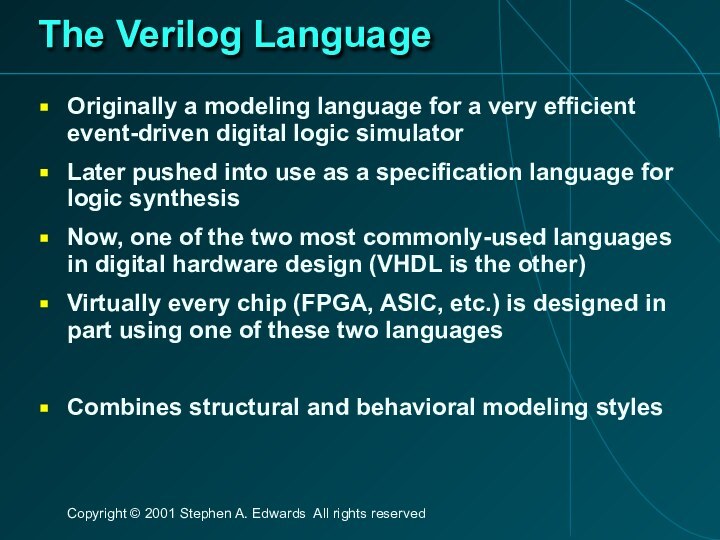

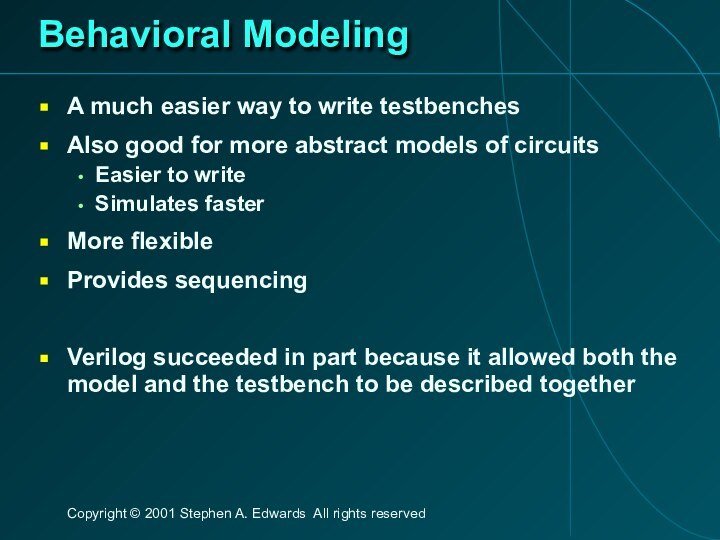


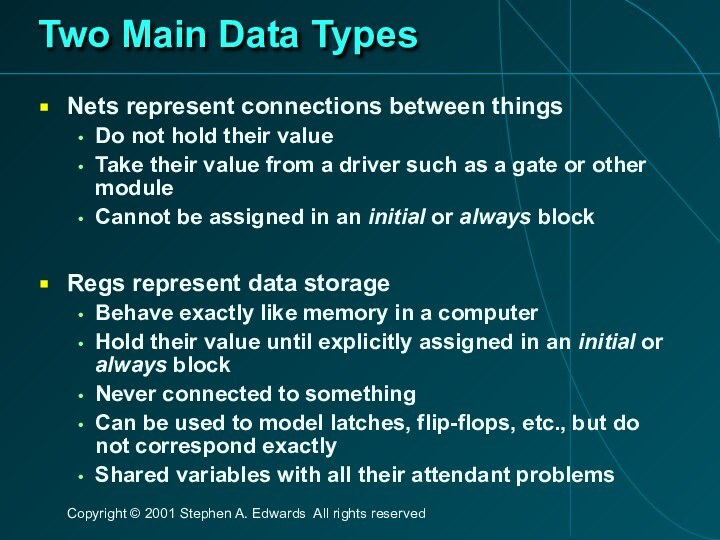

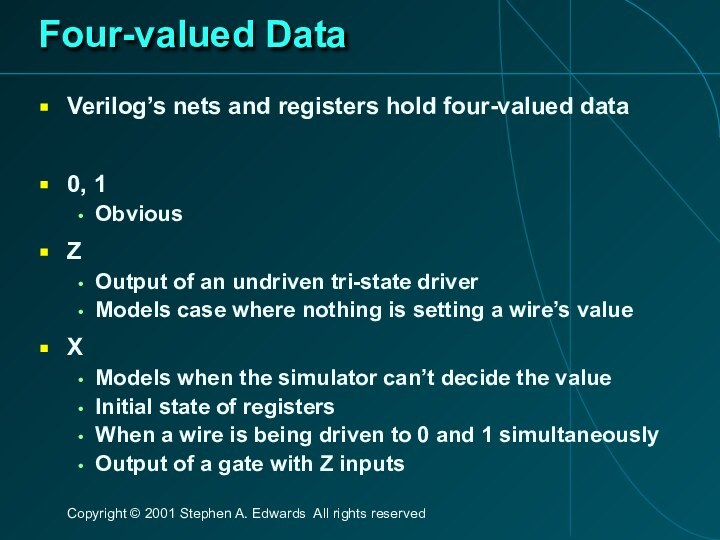

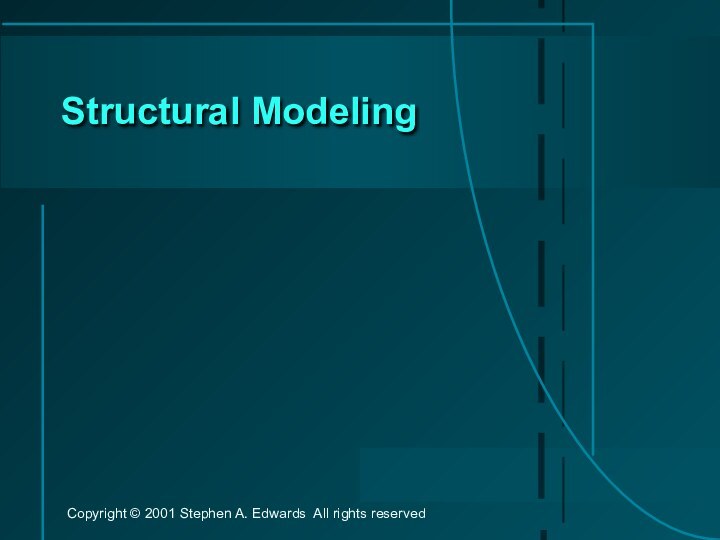
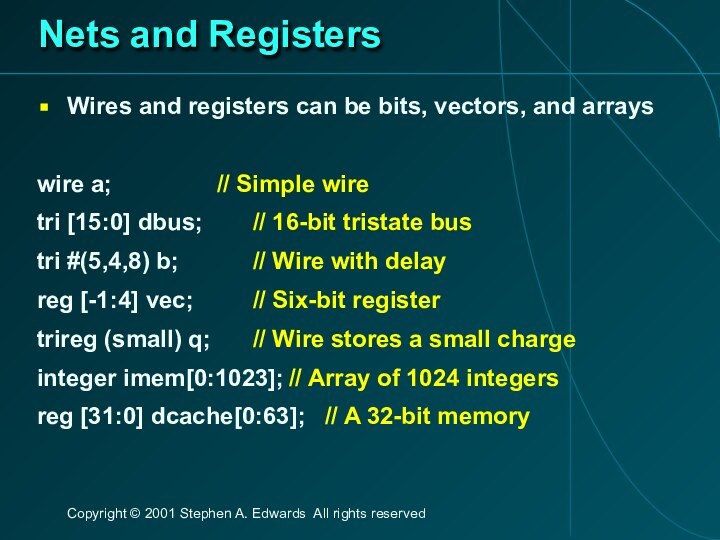


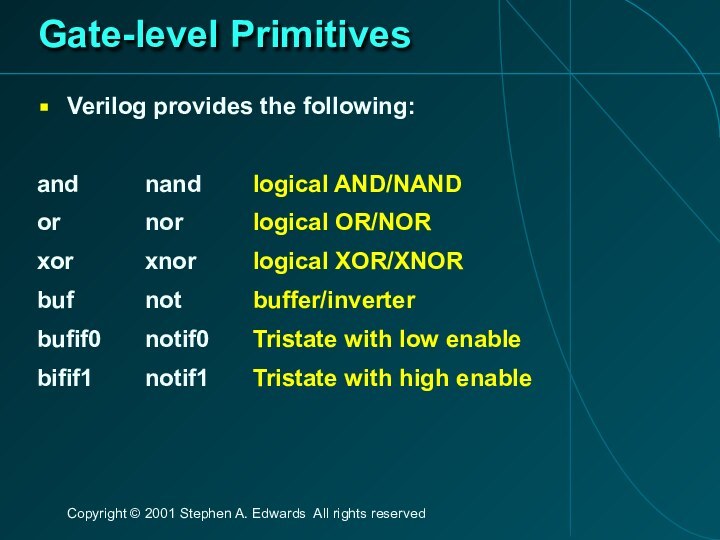
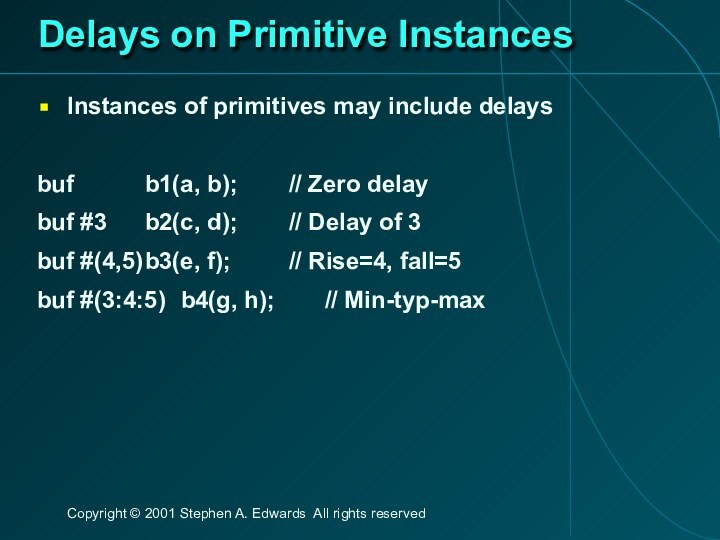
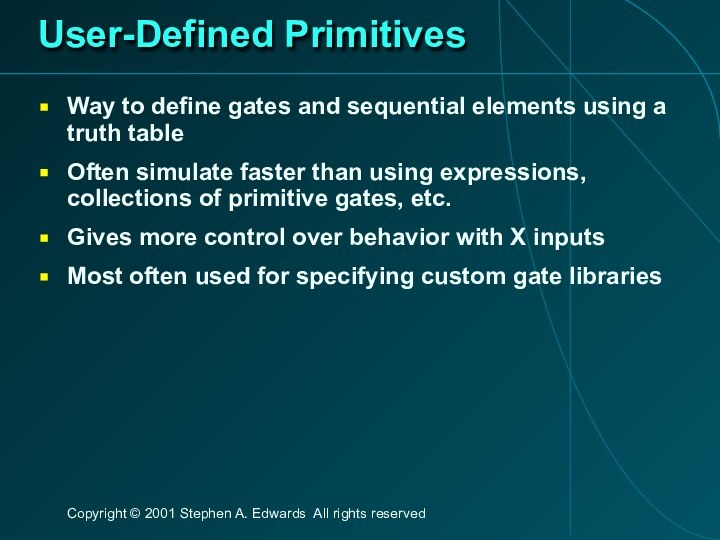
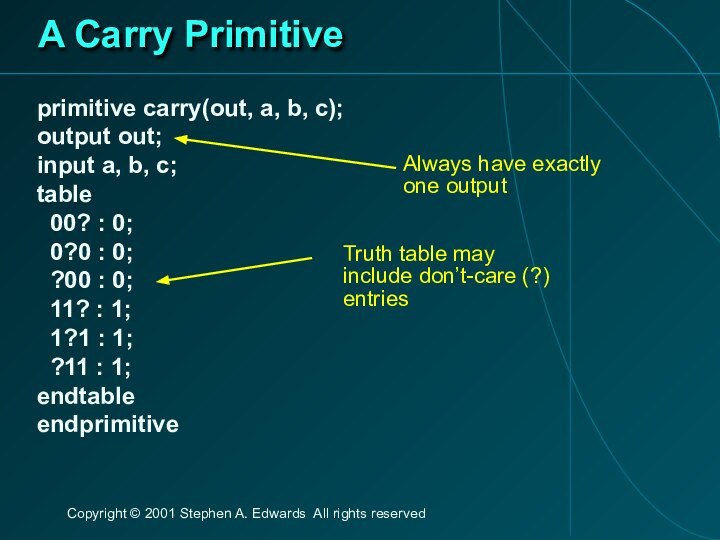

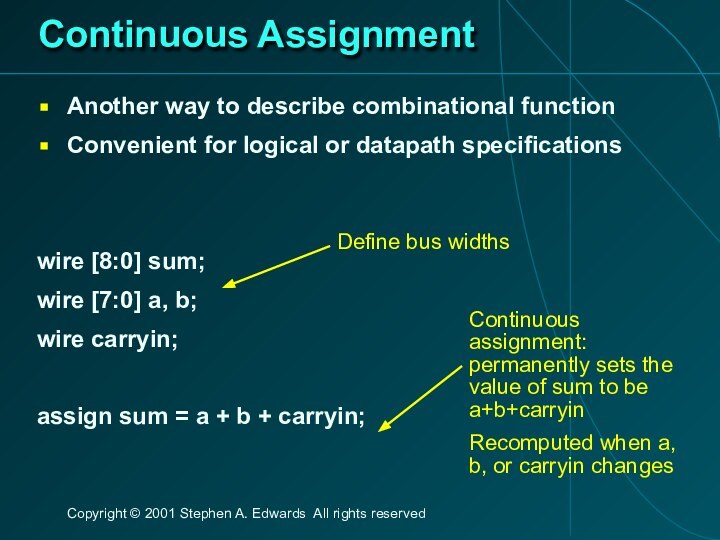
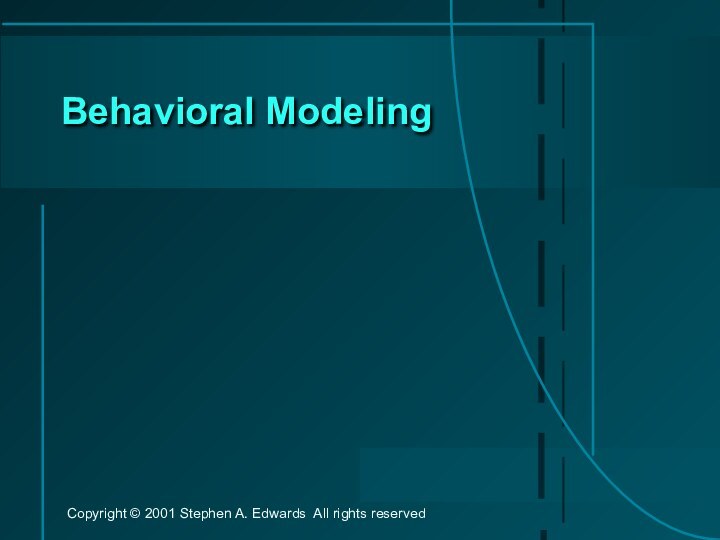

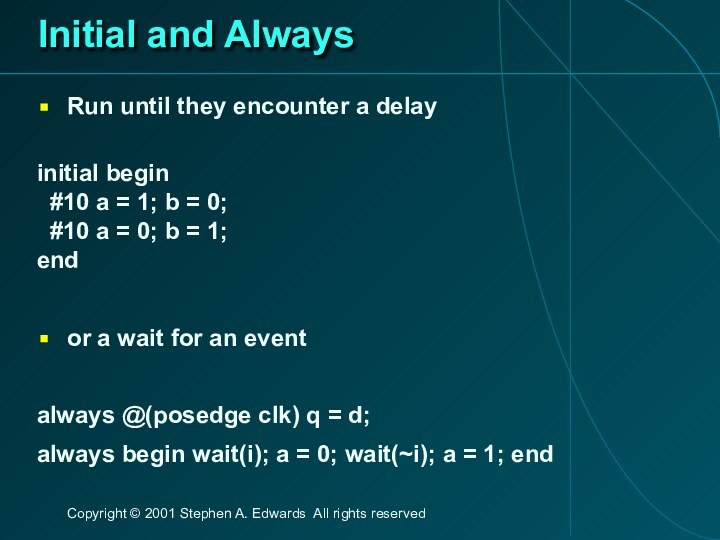

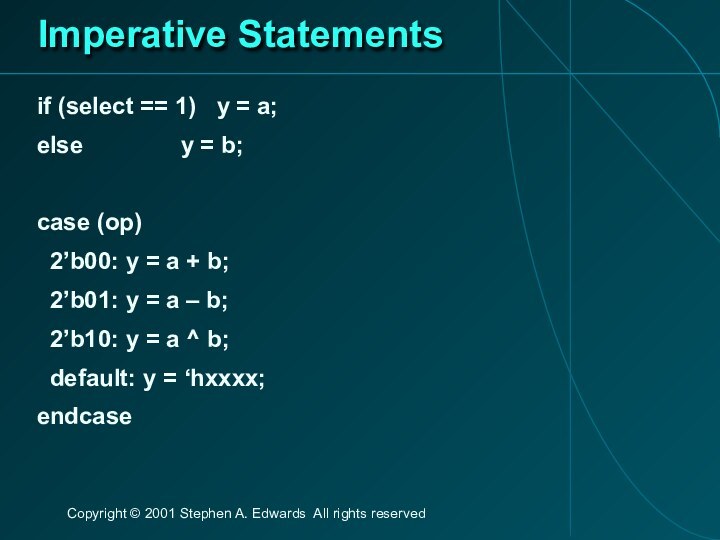
![The Verilog Language For LoopsA increasing sequence of values on an outputreg [3:0] i, output;for](/img/tmb/15/1442080/5e00273d77de4c6527d6bedd0d60df61-720x.jpg)
![The Verilog Language While LoopsA increasing sequence of values on an outputreg [3:0] i, output;i = 0;while (I](/img/tmb/15/1442080/4529c3bc4f22caf7c177dca004f31d86-720x.jpg)
